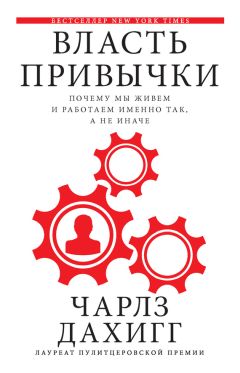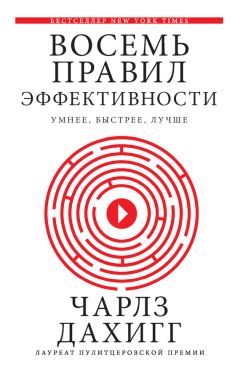Ознакомительная версия.
5
Lisa Stefanacci et al., “Profound Amnesia After Damage to the Medial Temporal Lobe: A Neuroanatomical and Neuropsychological Profile of Patient E. P.”, Journal of Neuroscience 20, № 18 (2000): 7024–36.
Я очень благодарен семьям Паули и Рейс, всем ученым из лаборатории Сквайра, а также журналистам, освещавшим историю Юджина в средствах массовой информации. Основные публикации, которыми я пользовался, включают: Joshua Foer, “Remember This”, National Geographic, 11/2007, 32–57; “Don’t Forget”, Scientific American Frontiers, Chedd-Angier Production Company, PBS, эпизод первый, эфир от 11/05/2004; “Solved: Two Controversial Brain Teasers”, Bioworld Today, 08/1999; David E. Graham, “UCSD Scientist Unlocks Working of Human Memory”, The San Diego Union-Tribune, 12/08/1999.
Richard J. Whitley & David W. Kimberlan, “Viral Encephalitis”, Pediatrics in Review 20, № 6 (1999): 192–98.
В одних опубликованных исследованиях сказано, что Г.М. получил травму в девять лет; в других – в семь.
Во всех исследованиях, опубликованных до сих пор, указано, что Г.М. сбил велосипедист; согласно новым данным, он мог упасть с мотоцикла.
Luke Dittrich, “The Brain That Changed Everything”, Esquire, 10/2010.
Eric Hargreaves, “H.M.”, Page O’Neuroplasticity, http://homepages.nyu.edu/~eh597/HM.htm.
Benedict Carey, “H.M., Whose Loss of Memory Made Him Unforgettable, Dies”, The New York Times, 5/12/2008.
В то время это была обычная практика.
Dittrich, “The Brain That Changed Everything”; Larry R. Squire, “Memory and Brain Systems: 1969–2009”, Journal of Neuroscience 29, № 41 (2009): 12711–26; Larry R. Squire, “The Legacy of Patient H.M. for Neuroscience”, Neuron 61, № 1 (2009): 6–9.
Jonathan M. Reed et al., “Learning About Categories That Are Defined by Object-Like Stimuli Despite Impaired Declarative Memory”, Behavioral Neuroscience 113 (1999): 411–19; B. J. Knowlton, J. A. Mangels, & L. R. Squire, “A Neostriatal Habit Learning System in Humans”, Science 273 (1996): 1399–1402; P. J. Bayley, J. C. Frascino, & L. R. Squire, “Robust Habit Learning in the Absence of Awareness and Independent of the Medial Temporal Lobe”, Nature 436 (2005): 550–53.
B. Bendriem et al., “Quantitation of the Human Basal Ganglia with Positron Emission Tomography: A Phantom Study of the Effect of Contrast and Axial Positioning”, IEEE Transactions on Medical Imaging 10, № 2 (1991): 216–22.
G. E. Alexander & M. D. Crutcher, “Functional Architecture of Basal Ganglia Circuits: Neural Substrates of Parallel Processing”, Trends in Neurosciences 13 (1990): 266–71; André Parent & Lili-Naz Hazrati, “Functional Anatomy of the Basal Ganglia”, Brain Research Reviews 20 (1995): 91–127; Roger L. Albin, Anne B. Young & John B. Penney, “The Functional Anatomy of Basal Ganglia Disorders”, Trends in Neurosciences 12 (1989): 366–75.
Alain Dagher & T. W. Robbins, “Personality, Addiction, Dopamine: Insights from Parkinson’s Disease”, Neuron 61 (2009): 502–10.
Разобраться в экспериментах, которые проводят в лабораториях Массачусетского технологического института, а также в строении и функциях базальных ганглий, включая их роль в привычках и памяти, мне помогли следующие материалы: F. Gregory Ashby & John M. Ennis, “The Role of the Basal Ganglia in Category Learning”, Psychology of Learning and Motivation 46 (2006): 1–36; F. G. Ashby, B. O. Turner & J. C. Horvitz, “Cortical and Basal Ganglia Contributions to Habit Learning and Automaticity”, Trends in Cognitive Sciences 14 (2010): 208–15; C. Da Cunha & M. G. Packard, “Preface: Special Issue on the Role of the Basal Ganglia in Learning and Memory”, Behavioural Brain Research 199 (2009): 1–2; C. Da Cunha et al., “Learning Processing in the Basal Ganglia: A Mosaic of Broken Mirrors”, Behavioural Brain Research 199 (2009): 157–70; M. Desmurget & R. S. Turner, “Motor Sequences and the Basal Ganglia: Kinematics, Not Habits”, Journal of Neuroscience 30 (2010): 7685–90; J. J. Ebbers & N. M. Wijnberg, “Organizational Memory: From Expectations Memory to Procedural Memory”, British Journal of Management 20 (2009): 478–90; J. A. Grahn, J. A. Parkinson & A. M. Owen, “The Role of the Basal Ganglia in Learning and Memory: Neuropsychological Studies”, Behavioural Brain Research 199 (2009): 53–60; Ann M. Graybiel, “The Basal Ganglia: Learning New Tricks and Loving It”, Current Opinion in Neurobiology 15 (2005): 638–44; Ann M. Graybiel, “The Basal Ganglia and Chunking of Action Repertoires”, Neurobiology of Learning and Memory 70, № 1–2 (1998): 119–36; F. Gregory Ashby & V. Valentin, “Multiple Systems of Perceptual Category Learning: Theory and Cognitive Tests”, Handbook of Categorization in Cognitive Science, ed. Henri Cohen & Claire Lefebvre (Oxford: Elsevier Science, 2005); S. N. Haber & M. Johnson Gdowski, “The Basal Ganglia”, The Human Nervous System, 2nd ed., ed. George Paxinos & Jürgen K. Mai (San Diego: Academic Press, 2004), 676–738; T. D. Barnes et al., “Activity of Striatal Neurons Reflects Dynamic Encoding and Recoding of Procedural Memories”, Nature 437 (2005): 1158–61; M. Laubach, “Who’s on First? What’s on Second? The Time Course of Learning in Corticostriatal Systems”, Trends in Neurosciences 28 (2005): 509–11; E. K. Miller & T. J. Buschman, “Bootstrapping Your Brain: How Interactions Between the Frontal Cortex and Basal Ganglia May Produce Organized Actions and Lofty Thoughts”, Neurobiology of Learning and Memory, 2nd ed., ed. Raymond P. Kesner & Joe L. Martinez (Burlington, Vt.: Academic Press, 2007), 339–54; M. G. Packard, “Role of Basal Ganglia in Habit Learning and Memory: Rats, Monkeys and Humans”, Handbook of Behavioral Neuroscience, ed. Heinz Steiner & Kuei Y. Tseng, 561–69; D. P. Salmon & N. Butters, “Neurobiology of Skill and Habit Learning”, Current Opinion in Neurobiology 5 (1995): 184–90; D. Shohamy et al., “Role of the Basal Ganglia in Category Learning: How Do Patients with Parkinson’s Disease Learn?” Behavioral Neuroscience 118 (2004): 676–86; M. T. Ullman, “Is Broca’s Area Part of a Basal Ganglia Thalamocortical Circuit?” Cortex 42 (2006): 480–85; N. M. White, “Mnemonic Functions of the Basal Ganglia”, Current Opinion in Neurobiology 7 (1997): 164–69.
Ann M. Graybiel, “Overview at Habits, Rituals, and the Evaluative Brain”, Annual Review of Neuroscience 31 (2008): 359–87; T. D. Barnes et al., “Activity of Striatal Neurons Reflects Dynamic Encoding and Recoding of Procedural Memories”, Nature 437 (2005): 1158–61; Ann M. Graybiel, “Network-Level Neuroplasticity in Cortico-Basal Ganglia Pathways”, Parkinsonism and Related Disorders 10 (2004): 293–96; N. Fujii & Ann M. Graybiel, “Time-Varying Covariance of Neural Activities Recorded in Striatum and Frontal Cortex as Monkeys Perform Sequential-Saccade Tasks”, Proceedings of the National Academy of Sciences 102 (2005): 9032–37.
Графики, представленные в этой главе, упрощены. Полное описание результатов исследований можно найти в работах и лекциях доктора Энн Грэйбил.
Ann M. Graybiel, “The Basal Ganglia and Chunking of Action Repertoires”, Neurobiology of Learning and Memory 70 (1998): 119–36.
Более подробно см.: A. David Smith & J. Paul Bolam, “The Neural Network of the Basal Ganglia as Revealed by the Study of Synaptic Connections of Identified Neurones”, Trends in Neurosciences 13 (1990): 259–65; John G. McHaffle et al., “Subcortical Loops Through the Basal Ganglia”, Trends in Neurosciences 28 (2005): 401–7; Ann M. Graybiel, “Neurotransmitters and Neuromodulators in the Basal Ganglia”, Trends in Neurosciences 13 (1990): 244–54; J. Yelnik, “Functional Anatomy of the Basal Ganglia”, Movement Disorders 17 (2002): 15–21.
Более подробно см.: Catherine A. Thorn et al., “Differential Dynamics of Activity Changes in Dorsolateral and Dorsomedial Striatal Loops During Learning”, Neuron 66 (2010): 781–95; Ann M. Graybiel, “The Basal Ganglia: Learning New Tricks and Loving It”, Current Opinion in Neurobiology 15 (2005): 638–44.
Более подробно см.: Peter J. Bayley, Jennifer C. Frascino, & Larry R. Squire, “Robust Habit Learning in the Absence of Awareness and Independent of the Medial Temporal Lobe”, Nature 436 (2005): 550–53; M. Reed et al., “Learning About Categories That Are Defined by Object-Like Stimuli Despite Impaired Declarative Memory”, Behavioral Neuroscience 133 (1999): 411–19; B. J. Knowlton, J. A. Mangels, & L. R. Squire, “A Neostriatal Habit Learning System in Humans”, Science 273 (1996): 1399–1402.
Необходимо отметить, что работа Сквайра с Паули не ограничивалась исключительно привычками. Благодаря Юджину удалось сделать ряд важных открытий в таких областях, как пространственная память и прайминг. Более подробные сведения об этих и других находках представлены на персональной веб-странице Сквайра: http://psychiatry.ucsd.edu/faculty/lsquire.html.
Более подробно см.: Monica R. F. Hilario et al., “Endocannabinoid Signaling Is Critical for Habit Formation”, Frontiers in Integrative Neuroscience 1 (2007): 6; Monica R. F. Hilario & Rui M. Costa, “High on Habits”, Frontiers in Neuroscience 2 (2008): 208–17; A. Dickinson, “Appetitive-Aversive Interactions: Superconditioning of Fear by an Appetitive CS”, Quarterly Journal of Experimental Psychology 29 (1977): 71–83; J. Lamarre & P. C. Holland, “Transfer of Inhibition After Serial Feature Negative Discrimination Training”, Learning and Motivation 18 (1987): 319–42; P. C. Holland, “Differential Effects of Reinforcement of an Inhibitory Feature After Serial and Simultaneous Feature Negative Discrimination Training”, Journal of Experimental Psychology: Animal Behavior Processes 10 (1984): 461–75.
Jennifer L. Harris, Marlene B. Schwartz, & Kelly D. Brownell, “Evaluating Fast Food Nutrition and Marketing to Youth”, Yale Rudd Center for Food Policy and Obesity, 2010; H. Qin & V. R. Prybutok, “Determinants of Customer-Perceived Service Quality in Fast-Food Restaurants and Their Relationship to Customer Satisfaction and Behavioral Intentions”, The Quality Management Journal 15 (2008): 35; H. Qin & V. R. Prybutok, “Service Quality, Customer Satisfaction, and Behavioral Intentions in Fast-Food Restaurants”, International Journal of Quality and Service Sciences 1 (2009): 78. Более подробную информацию по данной теме можно найти в следующих источниках: C. Berridge, “Brain Reward Systems for Food Incentives and Hedonics in Normal Appetite and Eating Disorders”, Appetite and Body Weight, ed. Tim C. Kirkham & Steven J. Cooper (Burlington, Vt.: Academic Press, 2007), 91–215; K. C. Berridge et al., “The Tempted Brain Eats: Pleasure and Desire Circuits in Obesity and Eating Disorders”, Brain Research 1350 (2010): 43–64; J. M. Dave et al., “Relationship of Attitudes Toward Fast Food and Frequency of Fast-Food Intake in Adults”, Obesity 17 (2009): 1164–70; S. A. French et al., “Fast Food Restaurant Use Among Adolescents: Associations with Nutrient Intake, Food Choices and Behavioral and Psychosocial Variables”, International Journal of Obesity and Related Metabolic Disorders 25 (2001): 1823; N. Ressler, “Rewards and Punishments, Goal-Directed Behavior and Consciousness”, Neuroscience and Biobehavioral Reviews 28 (2004): 27–39; T. J. Richards, “Fast Food, Addiction, and Market Power”, Journal of Agricultural and Resource Economics 32 (2007): 425–47; M. M. Torregrossa, J. J. Quinn, & J. R. Taylor, “Impulsivity, Compulsivity, and Habit: The Role of Orbitofrontal Cortex Revisited”, Biological Psychiatry 63 (2008): 253–55; L. R. Vartanian, C. P. Herman, & B. Wansink, “Are We Aware of the External Factors That Influence Our Food Intake?” Health Psychology 27 (2008): 533–38; T. Yamamoto & T. Shimura, “Roles of Taste in Feeding and Reward”, The Senses: A Comprehensive Reference, ed. Allan I. Basbaum et al. (New York: Academic Press, 2008), 437–58; F. G. Ashby, B. O. Turner, & J. C. Horvitz, “Cortical and Basal Ganglia Contributions to Habit Learning and Automaticity”, Trends in Cognitive Sciences 14 (2010): 208–15.
Ознакомительная версия.





